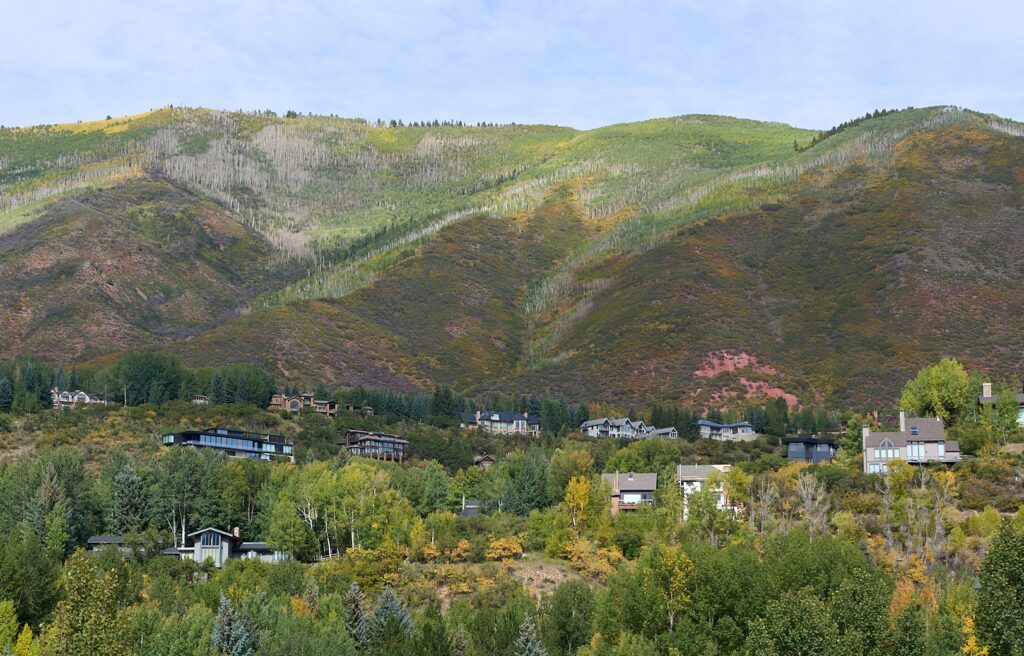Don’t Leaf Aspen Without Peeping Those Colors!
ACES Staff
September 14, 2012

Leaf Peeper: (n.) One who travels to view and photograph changing leaf colors in the fall.
Examples: off-season fall tourists populating the Maroon Bells; that relative that refuses to come visit you in Aspen unless it is the third week in September.
Examples: off-season fall tourists populating the Maroon Bells; that relative that refuses to come visit you in Aspen unless it is the third week in September.

The Catto Center at Toklat, a site of ACES, is located up Castle Creek, a prime leaf-peeping location.
Join us there for our annual membership potluck and fall colors celebration on Thursday September 20th at 5pm. RSVP here.
Ever since Labor Day passed, the influx of summer-season tourists has slowed—we have officially entered the off-season. Streets are calm, darkness comes a little earlier in the evening, and the grocery stores are navigable after five o’clock. However, the Roaring Fork Valley’s fall foliage produces an ephemeral golden light-show that brings one last burst of visitors before the winter.
When asked about timing a visit to Aspen to see the changing leaves, locals consistently point to the third week in September as the height of the color. It’s this time when the mountainsides are blanketed with the vibrant yellow of Aspen leaves, intermittently mixed with the dark green of the conifers. But exactly why do the Aspen leaves (and other leaves, too!) change color in the fall?
Most people are familiar with the fact that leaves contain chlorophyll—that’s the component that gives them their green pigment and allows for the process of photosynthesis. Chloroplasts are the little green engines of plant cells which capture sunlight to synthesize carbohydrates and sustain plant life. These chloroplasts contain the green chlorophyll which breaks down easily, and yellow carotenoids which are more durable. As nights lengthen and plant metabolism slows, the chlorophyll breaks down and allows the yellow carotenoids to shine through. With slower metabolism, leaf veins begin to clog and red anthocyanin sugars concentrate in the leaves, shining through like the carotenoids. Leaves high in carotenoids are yellow, those with a blend of carotenoids and anthocyanins are orange, and those high in anthocyanins are red.
So, grab your cameras… now is the time! Luckily for all the leaf peepers out there, I recently learned that the United States Forest Service maintains a Fall Colors Hotline, complete with updates on peaking colors in different National Forests around the country and suggestions for color-seeking activities. Feel free to embrace your inner leaf-peep and give it a call at 800-354-4595. Or give ACES a call for suggestions on local foliage hot-spots in the Roaring Fork Valley!
~Ellie Barber
Related Content

RFV Phenology: Green is out, yellow is in! Or is it?
Learn More
ACES // City of Aspen Open Space Birding: Marolt Open Space 9/5/2024
Learn More